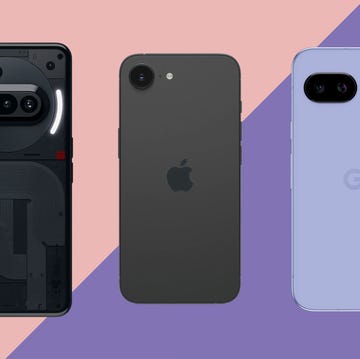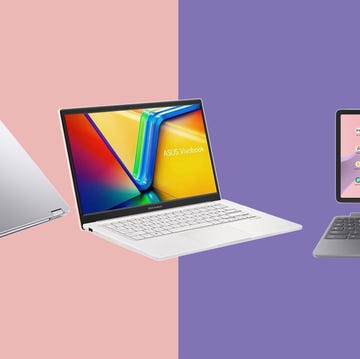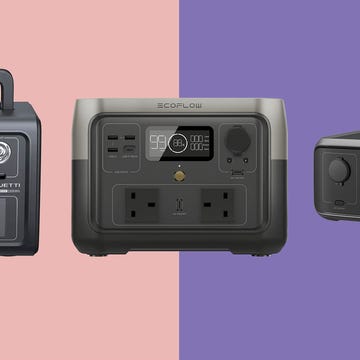By its own admission, Nothing isn’t a brand with much of a share of the smartphone market – it’s only around 0.2%, globally. So, if you've never heard of it, we're not surprised.
What's interesting about Nothing is its design-led approach, prioritising eye-catching transparent styles, LED lights, clean and minimal software and competitive specs at affordable prices. The look of Nothing products – like its new Headphone (1) – won’t suit everyone, but it has its fans.
Nothing recently unveiled what it calls its first “flagship” handset, the Nothing Phone (3). I’ve been using it for a few weeks to come to my verdict and find out it's worth its higher price of £799. Here's what you need to know.
Nothing Phone (3): At a glance
What I like about the Nothing Phone (3)
Compared to the best cheap phone options in Nothing’s range, the (3a) and (3a) Pro, there’s a clear upgrade to the specs here. You’re getting more storage, a speedier performance, a bigger battery, wireless charging, and the promise of longer software support.
I remain a big fan of the operating system, too. It’s not like other Android phones that can be littered with bloatware and features you don’t need. It’s clean, simple and very easy to use, with fun widgets, lots of design customisability (with the option of a monochrome interface) and the reassurance of long-term updates.
The Phone (3) also impresses with a big and bright display, a high-capacity battery and upgraded performance. If you’re getting a phone for a teenager and want to be sure it will last them a whole day and not feel slow, this is a good option, especially if they want something with an unusual style that turns heads.
Its camera setup is also competitive, with a telephoto zoom that you won't get if you buy the comparable iPhone or Google Pixel rival at this exact price. I’ve liked shooting with all the 50-megapixel lenses on this system – and have included several unedited camera samples below. The shots are punchy and contrasty, although still sometimes a little inconsistent.
Still, I have no issue recommending this alongside the other top cameras – it doesn’t beat Apple and Google, but it deserves to be in the conversation.
What I don’t like about the Nothing Phone (3)
This is a very polarising design. It definitely stands out, but as with Nothing’s first-ever over-ear headphones, I think it goes a bit too far with its discordant, asymmetrical look. Things feel out of place and unfinished, and it may be too "different" for most people. Even many among the tech-enthusiast audience aren’t convinced, so it won't suit everyone. On the other hand, it's a surefire way to stand out from the crowd!
Nothing hasn’t filled this with all the specs you'd expect to justify its steeper price tag either, especially if you compare it to the likes of the Samsung Galaxy S25, which is likely to be the first choice for many Android shoppers. The glass on the display isn’t the strongest available, the chip inside isn’t the best out there, and the cameras are beaten by rivals. You’ll have to be very sure you want the stand-out transparent design to overlook these compromises.
It’s also a shame that Nothing has ditched the LED light system that made its initial phones stand out so much. The “Glyph Interface” is now replaced by the “Glyph Matrix”, a smaller circle of lights that’s effectively a tiny display on the back of your phone. It might be useful for some, but I found it gimmicky.
I didn’t end up using Nothing’s “Glyph Toys” (games like “Spin The Bottle” that you can show on the Glyph Matrix) and while the “Essential Notifications” are clever, you may never use many of these features. For now, I’m not fully convinced by this as an addition.
The same can be said for Nothing’s new AI features. The phone has AI-powered built-in search and an “Essential Key” button that can send screenshots to your “Essential Space” (an app where you can access your saved memories) as reminders. I tried to get in the habit of using these, but neither of them feel like enough of a selling point to tempt iPhone and Samsung users to upgrade. In fact, I kept pressing the Essential Key when I didn’t mean to, as it’s right next to the lock button.
Verdict: Nothing Phone (3)
There’s a lot to admire about the Nothing Phone (3), a handset that improves on the specs of the company’s previous designs while maintaining its distinctive transparent look. You’re now getting a competitive rear triple-camera system, an upgraded chip and battery life, more storage and longer software support.
In everyday use, these upgrades all add up to a smartphone that feels very capable and versatile. I’m a fan of the minimal and easy-to-use operating system that’s full of smart features. While I’m not yet sold on the AI additions, there’s a chance these will grow to be much more useful, in time.
It’s a shame, though, that Nothing has removed the unique Glyph Interface in favour of the new Glyph Matrix. I’m not convinced this tiny display delivers quite the same functionality! The design is also incredibly divisive, and it may not offer quite as much value as certain rivals at this price. Overall, though, it’s a good phone that offers an experience quite unlike anything else out there.
Simon Cocks is Good Housekeeping UK’s Technology Editor, overseeing tech shopping content and strategy for the title. He previously also worked across other titles including Esquire UK, Digital Spy, Men’s Health UK and Women’s Health UK.
Simon specialises in testing the latest smart gadgets, home entertainment gear, headphones, speakers, portable chargers, radios, e-book readers and smartphones. He's reviewed top tech products from brands including Google, Apple, Amazon, JBL and Bose.
A magazine journalism graduate from Kingston University in 2014, Simon also worked on the Discovery and Silkroad inflight magazines. He then gained experience writing about entertainment at SFX and Total Film. He also contributed reviews and interviews to TwitchFilm (later ScreenAnarchy), CultBox and Frame Rated.
He joined Good Housekeeping UK as the Editorial Assistant for Special Projects and was part of Good Housekeeping’s Consumer Affairs Team between 2014 and 2019. In this role, he conducted price comparison research, wrote detailed household and money-saving advice guides and edited thousands of in-depth reviews for the Good Housekeeping Institute.
He has focused on technology and gadgets since 2020, where he started by testing out power banks and instant cameras. He writes reviews, roundups, news articles and deals updates, and also covers top tech deals during sales like Amazon Prime Day, Black Friday and Cyber Monday.
When not testing out the latest gizmos, you’ll find Simon either catching up with the newest releases at his local cinema or out shooting with his beloved compact camera.
You can follow Simon on Instagram, on Bluesky, on LinkedIn and on Threads.















